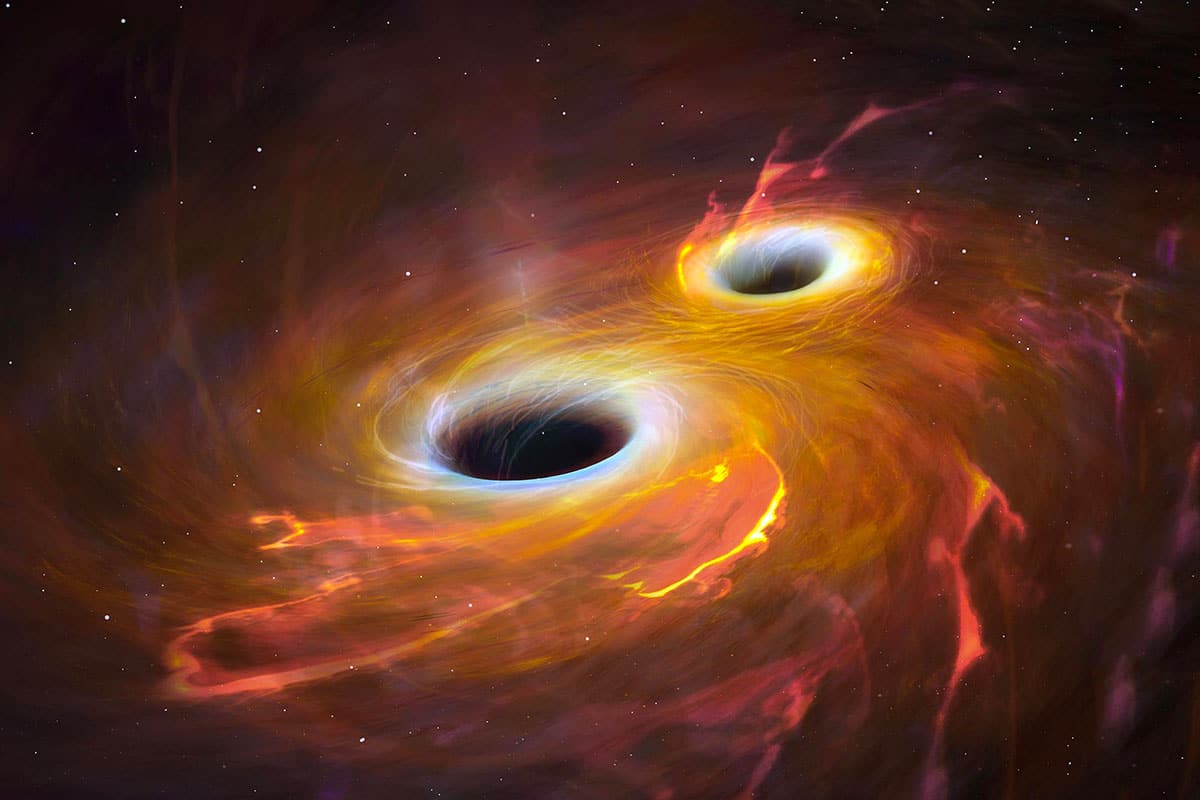In a surprising astronomical discovery, scientists have spotted two pairs of supermassive black holes on the verge of merging. This unprecedented event, taking place in two small constellations, provides a unique view of the formation and evolution of galaxies in the early universe.
Unprecedented cosmic dance : Two pairs of black holes
NASA’s Chandra X-ray Observatory has been captured unusual images of two small constellationsMirabilis and Elstir & Vinteuil, located 760 million and 3.2 billion light-years from our galaxy, respectively. These observations revealed a never-before-seen view of the universe: every constellation is a port not one, but two supermassive black holes at its core.
The discovery of black hole pairs was made possible by observing X-ray emissions from their accretion disks. When matter falls into a black hole, it creates a disk of very hot plasma around it, emitting X-rays that can be seen by special instruments like Chandra.
This remarkable discovery was reported in a study published in The Astrophysical Journal and ArXiv, which sheds light on the complex process of star evolution. The importance of this discovery lies in its ability to reveal secrets about the formation of large galaxies such as our Milky Way.
Dwarf galaxies: Structures of the universe’s giants
Young galaxies, containing less than a billion stars, play an important role in the history of the universe. Scientists believe that these small groups of stars are progenitors of larger, more mature galaxies like ours. Through a series of mergers over billions of years, these baby universes grew into the round and elliptical galaxies we see today.
To make this clear, consider the following illustration:
| Galaxy version | Number of Stars |
|---|---|
| A small galaxy | <1 billion |
| Milky Way | 200-400 billion |
Brenna Wells, co-author of the study, explains: “Many small galaxies and black holes in the early universe are likely to be larger now, due to frequent mergers. years to produce large galaxies like our own Milky Way.
Implications for understanding galactic growth
This unprecedented discovery of two pairs of holes in the merging of young galaxies opens up new avenues of research into the formation and evolution of matter. Scientists are very excited about the possible clues this discovery can provide on the early stages of the galaxy’s development.
The process of merging these black holes with their galaxies is expected to provide important information about:
- The role of black holes in galactic growth
- The energy of a galaxy
- The formation of supermassive black holes
- The relationship between the mass of a black hole and the size of a galaxy
Jimmy Irwin, a co-author of the study, emphasizes the importance of continuing to observe : “The latest analysis of these two systems will allow us to learn important techniques for understanding galaxies and holes they are black when we are young.”
Future research and cosmic implications
As astronomers continue to monitor these merging galaxies, they expect to gather important information that could change our understanding of the evolution of the universe. The the merging of small galaxies and their central black holes it represents a major part of the life cycle of galaxies, which explains how the universe evolved from its early state to the complex system of celestial objects we see today.
This first-ever hint of a black pair on the brink of merging marks a milestone in astronomical research. It not only provides a rare glimpse into the process of stellar evolution but also lays the groundwork for future studies that could unravel some of the deepest mysteries of our universe.
As we continue to peer deeper into the universe, discoveries like these remind us of the dynamic and ever-changing nature of our universe. The combination of these black holes and the galaxies in which they are located acts as a cosmic time, which allows us to see the processes that shaped the space of our galaxy billions of years ago.
#black #pairs #collide.. #Scientists #amazed #cosmic



